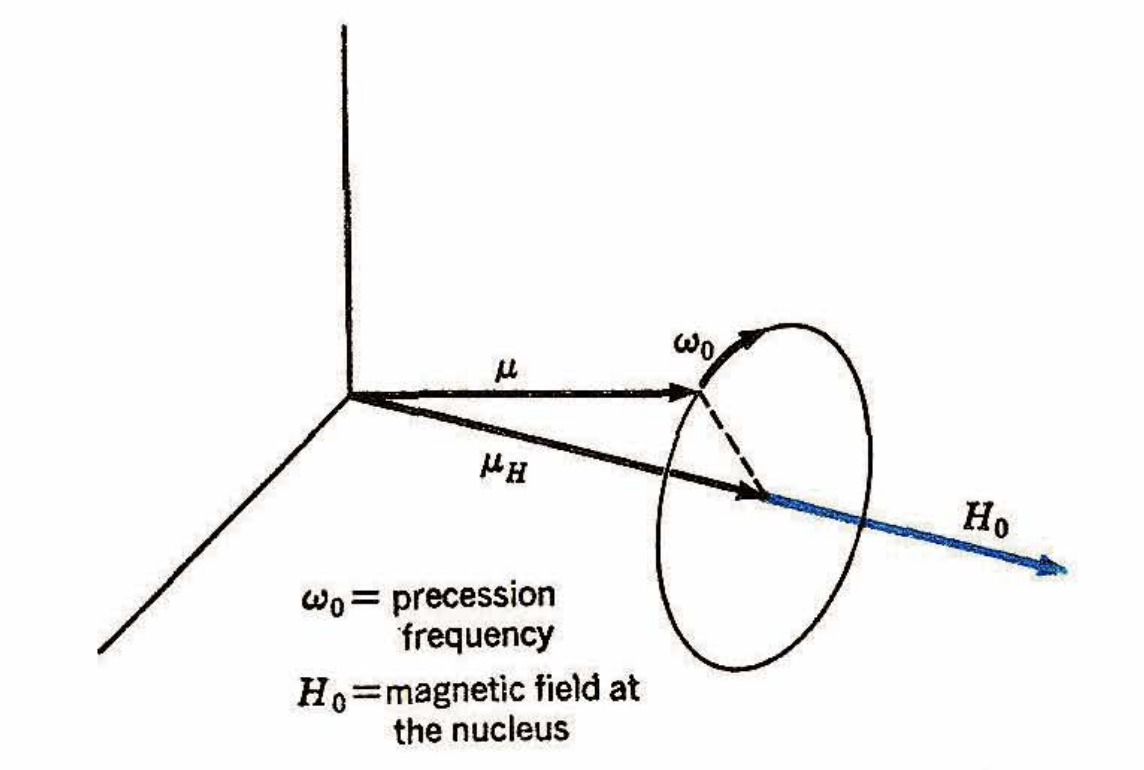1.5: Nuclear Precession
- Page ID
- 366637

When a nucleus with a magnetic moment is placed in a magnetic field, it acts as though it were undergoing precession around the field axis at an angular velocity \(\omega \)o which is directly proportional to the magnetic field at the nucleus Ho. This precession is analogous to the precession of a spinning gyroscope when allowed to topple in the earth's gravitational field. The direction of precession of a gyroscope depends on the direction of its angular momentum vector, and the angular velocity depends on the magnitude of the angular momentum vector and the strength of the gravitational field to which it is subjected. For nuclei, the proportionality constant \(\gamma \) between the angular velocity of precession and the field strength depends on the angular spin momentum and the magnetic moment of the nucleus. \(\gamma \) is called the "gyromagnetic" ratio or, less commonly, the "magnetogyric" ratio. All nuclei of the same charge and mass number have the same gyromagnetic ratio. Thus, all protons act as though they precess at the same angular velocity when the magnetic field strength at the nucleus is the same. \(\gamma \) may be either positive or negative, corresponding to different directions of precession.


